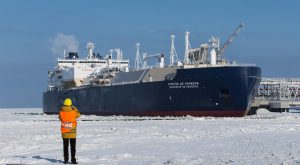In 2019, China’s new Xue Long 2 ice breaker – also known by its English name, the Snow Dragon 2 – made its first trip to Antarctica. This August, the vessel joined an international research team in the Arctic, highlighting China’s growing involvement in far-off waters.
With everyone’s attention on the Xue Long 2, few have perhaps noticed the delivery of several other new marine research vessels. These include China’s most advanced vessel for fisheries research, the Lan Hai 101 (Blue Seas 101), and for deep-sea mineral prospecting, the Da Yang Hao (Ocean). Also new on the seas is the Dong Fang Hong 3 (East is Red 3), the world’s largest “silent” research vessel. These new additions to the Chinese fleet will replace older ships soon to be retired, and open up new frontiers in marine research.
Chinese marine research got off to a later start than that of other seafaring nations. It was only in the 1950s that fishing vessels and tugboats were repurposed for marine research, and the first step was to explore China’s own waters. At the same time, the US was sending a manned submersible to depths of seven kilometres.
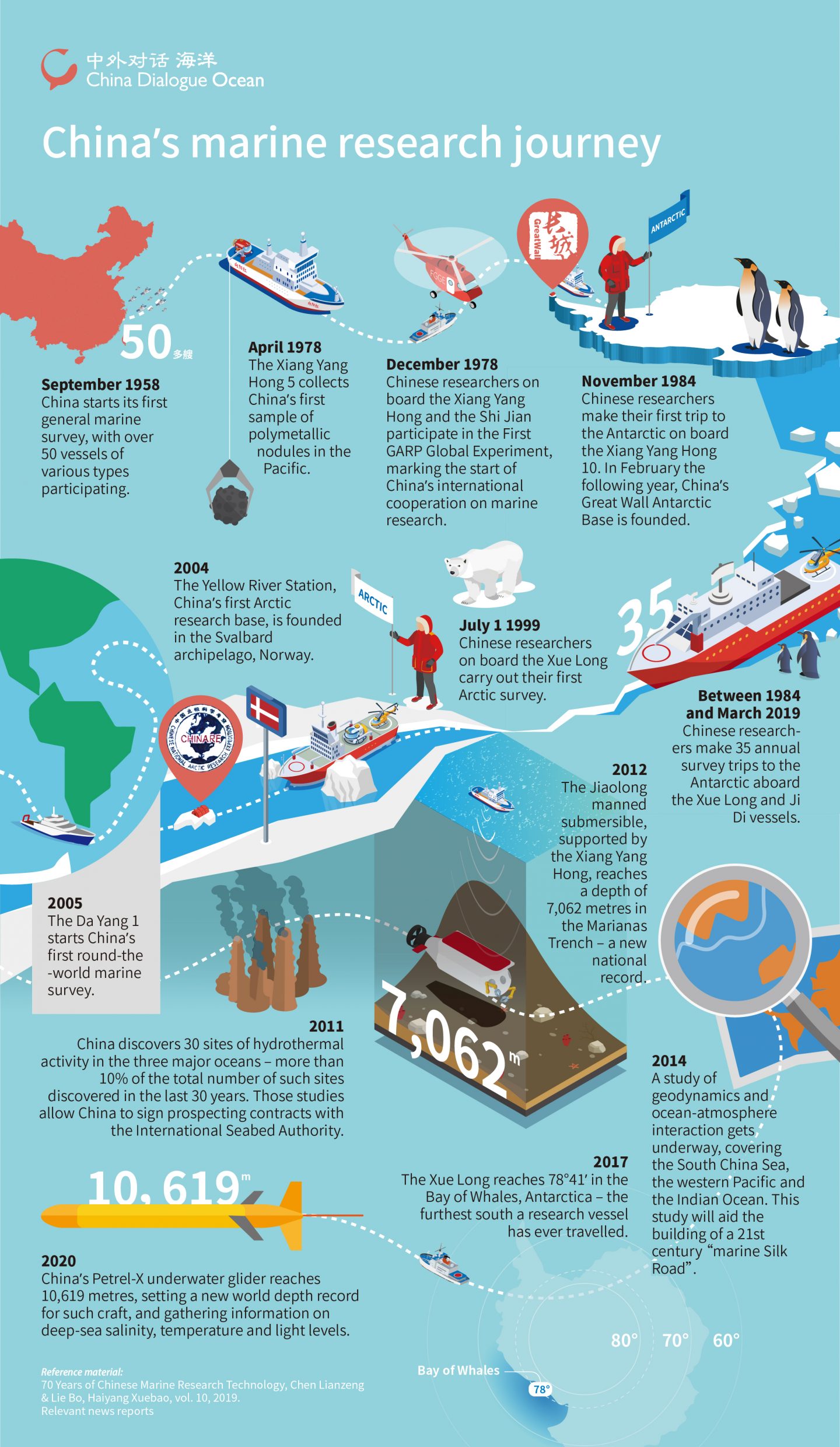
China’s first ocean survey fleet was made up of only the Xiang Yang Hong (Facing the Red Sun) series of research and naval vessels. Today, China has almost 60 marine research vessels in use. These include the Xue Long icebreakers and the Xiang Yang Hong, Da Yang, Ke Xue (Science) and Dong Fang Hong series of general research vessels. Many have been designed and built in the last decade.
China’s growing presence comes as inshore fisheries are increasingly depleted and technological advances are making it easier to exploit distant waters as well as the riches of the deep sea. Indeed, the high seas – those areas of our oceans beyond national jurisdictions – have become a new hot spot in the struggle to gain influence and control over resources.
Scientific research has a key role to play in this. It’s thanks to survey work carried out by some of the research vessels looked at in this article that China has acquired five deep-sea prospecting licences, for instance. But research can also play a key role in efforts to strengthen conservation – it was scientific confirmation of the ecological vulnerability of the waters off the Antarctic Peninsula that led to the world’s five largest krill fishing firms halting activities there.

The ongoing upgrading of China’s research fleet and its expanding cooperation with international scientific missions reflects the country’s dual marine ambitions. China wants its share of the world’s resources – but it also wants its share of global governance responsibilities.
With this in mind, we take an in-depth look at nine currently or soon-to-be active research vessels from China’s fleet, selected for their achievements or for their cutting-edge technology.
Xiang Yang Hong 09
Type: General survey vessel; and later submersible mothership
Displacement: 4,425 tonnes
Length: 112.05 metres
Delivered: 1978
Designer: 708th Research Institute, China State Shipbuilding Corporation
Shipbuilder: Hudong-Zhonghua Shipbuilding
Owner: North China Sea branch, State Oceanic Administration
Home port: Qingdao, Shandong province

The Xiang Yang Hong 09 was the first 4,500-tonne-class distant-water research vessel to be designed and built in China, and is the last surviving member of the original Xiang Yang Hong series. It was the first Chinese vessel to participate in international distant-water research back in the 1970s, and was rushed to completion in only a year so that it could join World Meteorological Organisation atmospheric experiments. It later took part in several more joint expeditions, including surveys of the East China Sea with US vessels, of the Kuroshio current with Japanese vessels and of the mouth of the Yangtze River with French vessels, as well as undertaking China’s own ocean research projects.
Then, when China started preparing for trials of manned submersibles in 2006, a mothership was needed. With few large-tonnage research vessels available, the Xiang Yang Hong 09 took on a new role, despite being 30 years old. It successfully supported sea trials of the Jiaolong submersible, including a national record dive to a depth of 7,062 metres in the Mariana Trench. Its role as the Jiaolong’s mothership has now been handed over to a purpose-built vessel, the Shen Hai Yi Hao (Deep Sea One), and it is now awaiting refitting and a new mission.
Da Yang Yi Hao
Type: General survey vessel
Displacement: 5,600 tonnes
Length: 104.5 metres
Delivered: 1985
Refitted: 2002
Shipbuilder: Kherson Shipyard, Ukraine (then part of the USSR)
Refitter: Hudong-Zhonghua Shipbuilding
Owner: China Ocean Mineral Resource R&D Association (COMRA)
Home port: Qingdao, Shandong province

A frequent traveller with three global surveys under its belt, the Da Yang Yi Hao (Ocean One) was built by the USSR in 1985 as a geology and geophysics survey vessel. It was purchased by China in 1994 and later refitted to become the country’s first modern distant-water survey vessel.
Owned by the China Ocean Mineral Resources R&D Association, the ship’s main purpose is prospecting for mineral resources. An imaging system fitted to the stern allows for detailed real-time mapping of the ocean floor. Other on-board equipment allows for sampling of seawater and minerals from the seabed. In 2007, the Da Yang Yi Hao dispatched an automated submersible to a depth of 2,800 metres at the Southwest Indian Ridge and identified hydrothermal vents rich in minerals, the first such discovery in the region. This prompted the signing of a 15-year prospecting contract between China and the International Seabed Authority, covering a 10,000 square kilometre area of the Southwest Indian Ridge.
Ke Xue
Type: General survey vessel
Displacement: 4,771 tonnes
Length: 99.8 metres
Delivered: 2012
Designer: 708th Research Institute, China State Shipbuilding Corporation
Shipbuilder: Wuchang Shipbuilding
Owner: Institute of Oceanology, Chinese Academy of Sciences
Home port: Qingdao, Shandong province
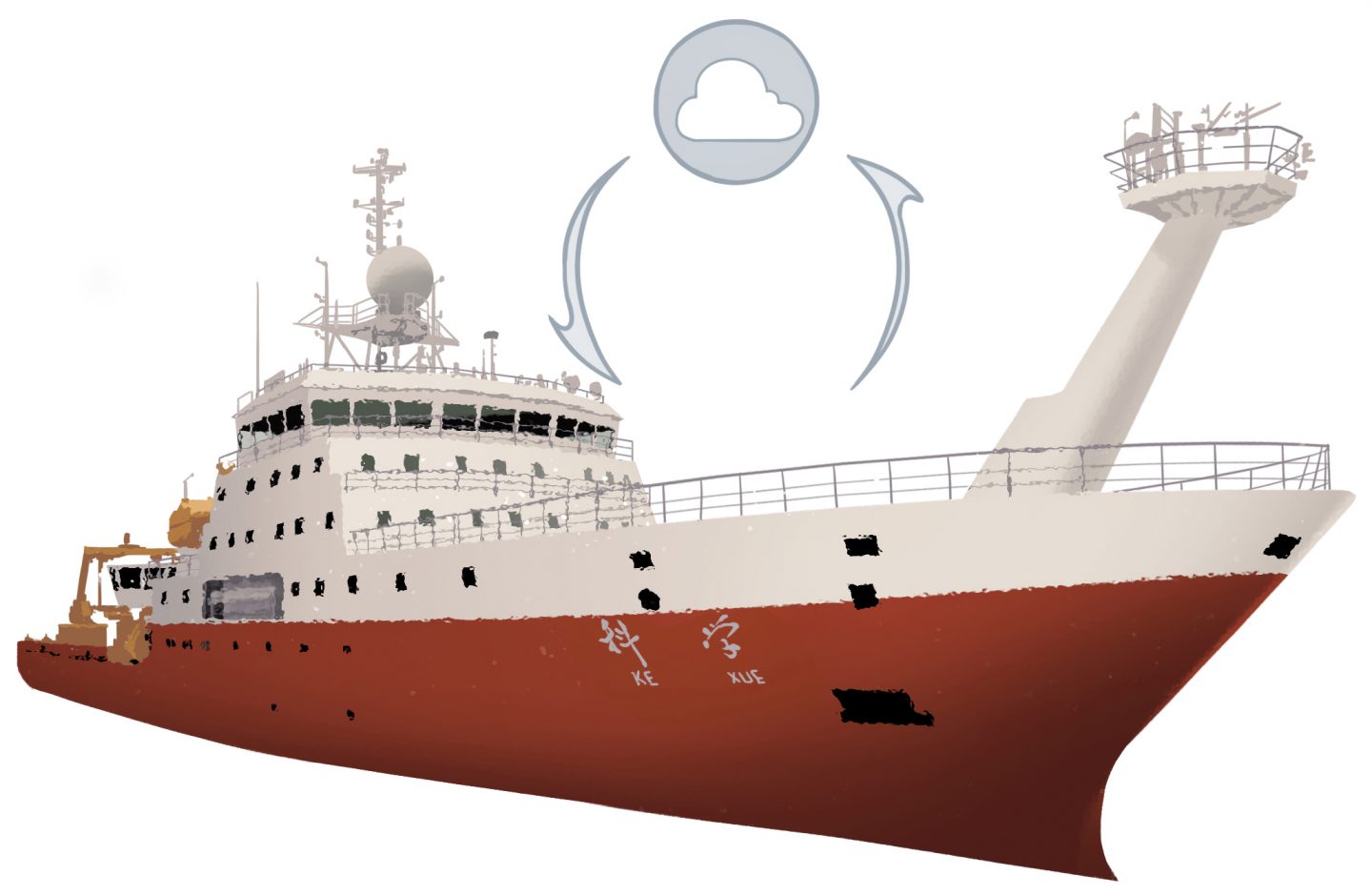
When work started on the design and build of the Ke Xue in 2007, it was intended to fill a gap in deep-sea research. At that point, most of China’s distant-water research ships had been designed to prospect for minerals, and its other scientific vessels were mainly coastal. When it first took to the seas in 2013, the Ke Xue was China’s most advanced scientific vessel, with 670 square metres of laboratories on board. Its achievements include the discovery of large sulphur beds around the hydrothermal vents of the Okinawa Trough, and collection of China’s first data on how the El Niño starts and ends.
Unlike most marine research vessels, which are long and thin, the Ke Xue is short and wide, making it better able to withstand rough seas and maintain a precise position. In October 2019, it set off from Qingdao with 70 crew members and international researchers from 12 institutions and universities to fulfil 40 tasks set by China’s National Natural Science Foundation, its longest trip since its maiden voyage. Such multi-agency, multi-mission trips are a new normal for Chinese research vessels.
Xiang Yang Hong 03
Type: General survey vessel
Displacement: 4,800 tonnes
Length: 99.6 metres
Delivered: 2016
Designer: 708th Research Institute, China State Shipbuilding Corporation
Shipbuilder: Wuchang Shipbuilding
Owner: Third Institute of Oceanology, Ministry of Natural Resources
Home port: Xiamen, Fujian province

Between the 1960s and 1990s, China built or refitted a number of ships for research purposes. All those belonging to the State Oceanic Administration (SAO) or the navy were given the Xiang Yang Hong name and a number, establishing a naming convention for Chinese research vessels. Of those original vessels, only the Xiang Yang Hong 09 remains in service. The Xiang Yang Hong 03 is a new vessel that joined the SOA’s survey fleet in March 2016. It is currently China’s most advanced 4,500-tonne-class general survey vessel, fitted with all-electric “azimuth” thrusters and bow thrusters, which allow it to turn 360 degrees on the spot. It also has some ice-breaking capabilities.
In 2019, the Xiang Yang Hong 03 joined the Pilot Ocean Laboratory’s distant-water and deep-sea survey fleet. It runs open trips, allowing any Chinese research team to apply for space on board. A multipurpose ship, it supports research into a wide range of areas, including ocean waters, microbial genetic resources, polymetallic nodules in both deep-sea and coastal regions, as well as deep-sea environments and biodiversity. Its specialised equipment can be used in high-pressure, low-temperature, low-nutrient and low-light deep-sea environments, as well as to cultivate microorganisms in ways that can’t be done on land. The vessel can even be deployed in non-research related scenarios, such as helping clean up coasts affected by oil spills.
Dong Fang Hong 3
Type: Distant and deep-water general survey training vessel
Displacement: 5,000 tonnes
Length: 103 metres
Delivered: 2015
Designer: 708th Research Institute, China State Shipbuilding Corporation
Shipbuilder: Jiangnan Shipbuilding
Owner: China Ocean University
Home port: Qingdao, Shandong province
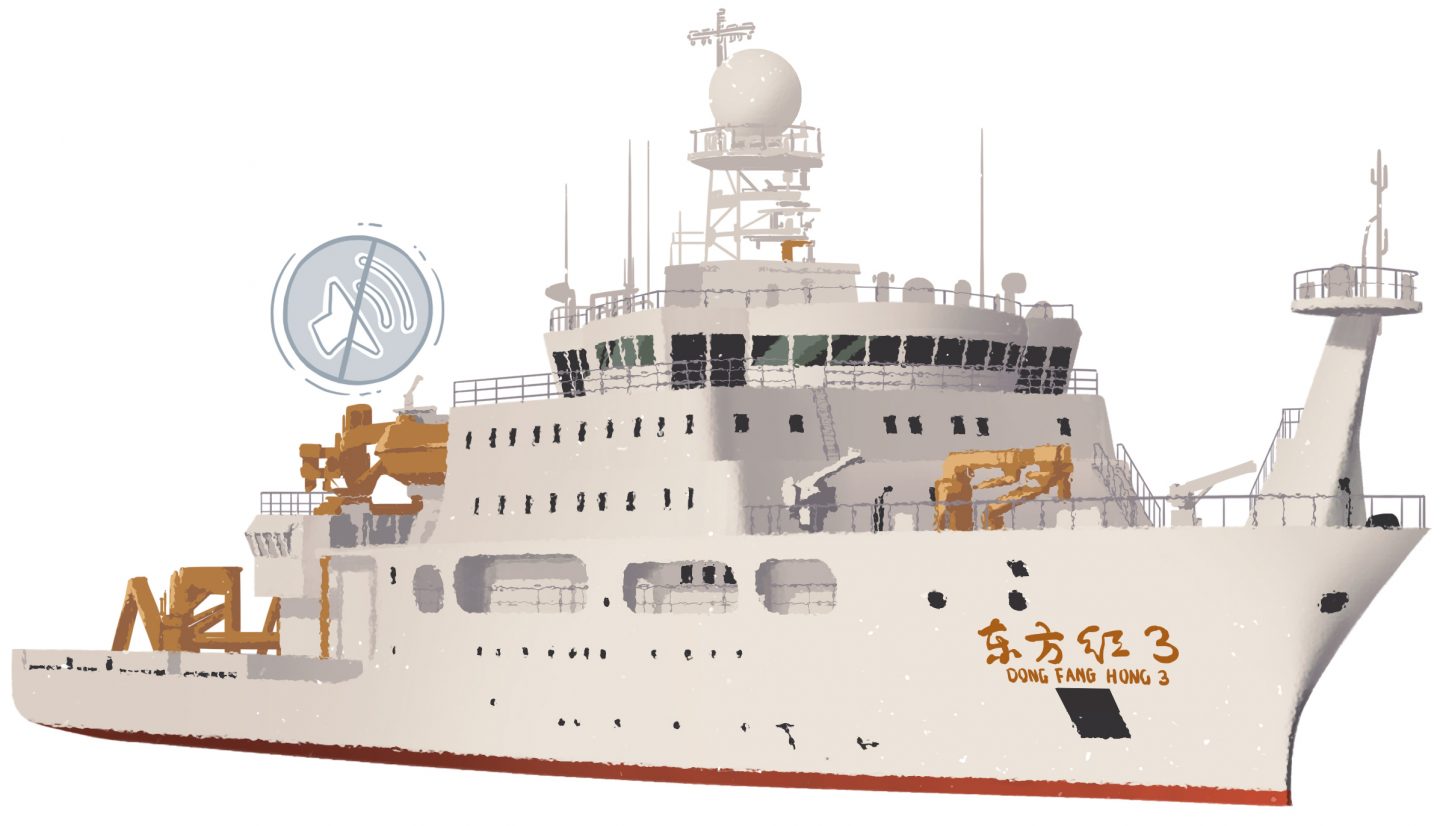
The Dong Fang Hong 3 is China’s largest “silent” scientific vessel, and also has the research fleet’s largest crew and biggest deck and laboratory areas. To gain the strictest international certification for underwater noise, the ship’s designers broke with precedent and used military-grade technology to reduce vibrations. This not only helps protect the crew’s well-being, but also reduces disruption to marine life and allows for the collection of more accurate data. As the chief designer said: “A fish 20 metres under the water wouldn’t even notice it passing overhead.” Research on controlling underwater noise was only just getting started in China when the shipbuilding contract for this vessel was signed – the handover and launch of the Dong Fang Hong 3 indicates how rapidly China’s shipbuilding technology is developing.
Lan Hai 101
Type: Fisheries science and survey vessel
Displacement: 3,289 tonnes
Length: 84.5 metres
Delivered: 2019
Designer: 702th Research Institute, China State Shipbuilding Corporation,
Shipbuilder: Hudong-Zhonghua Shipbuilding
Owner: Yellow Sea Fisheries Research Institute
Home port: Qingdao, Shandong province
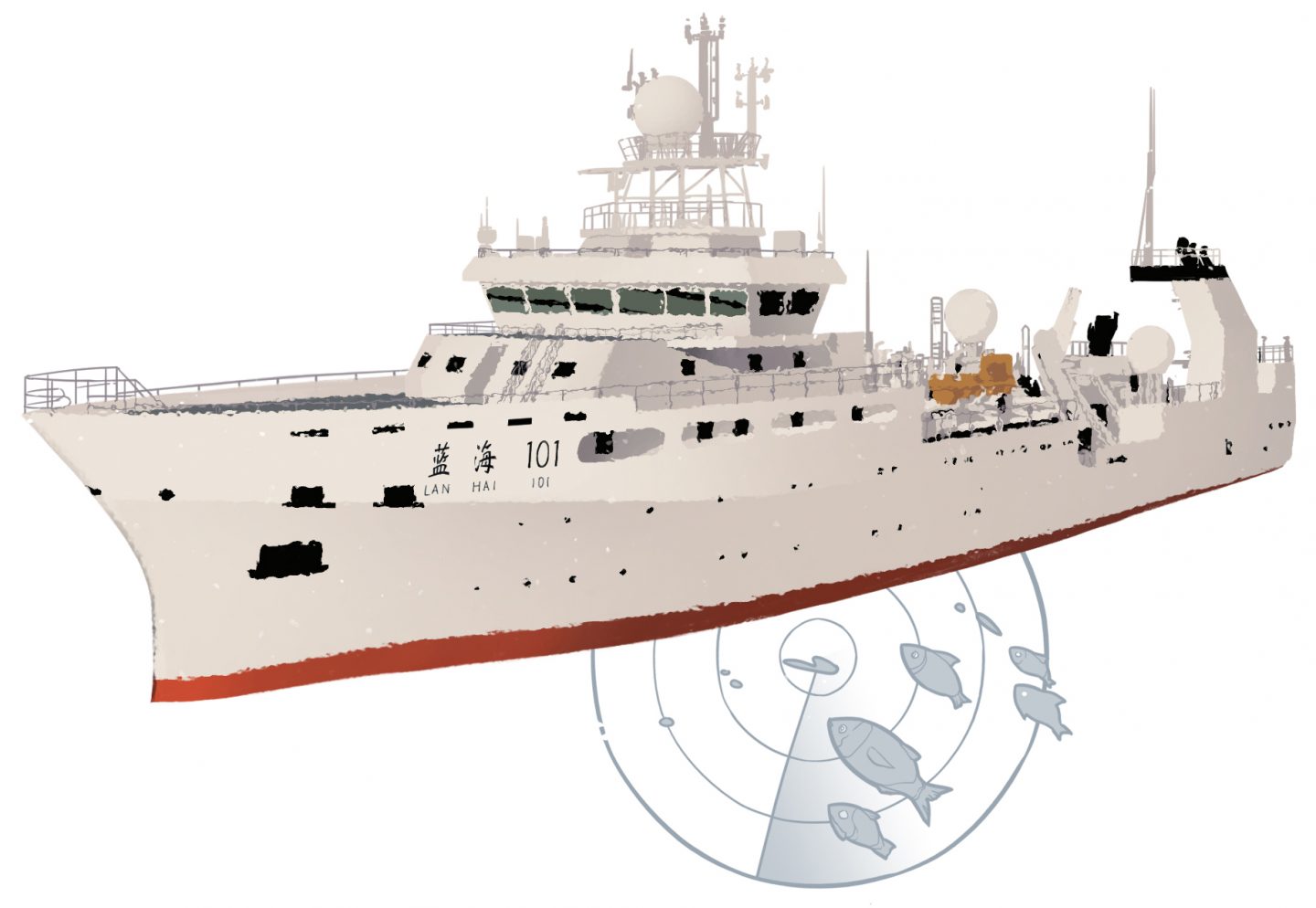
The Yellow and Bohai seas are home to many of China’s most important fisheries. With damage to coastal areas worsening, there is a pressing need for accurate assessments of both fishery resources and the marine environment. The Lan Hai 101 was built to meet this need. It is China’s most advanced fisheries research vessel, featuring a range of onboard laboratories. Researchers can conduct comprehensive surveys of fishery stocks, but also trial new fishing gear and techniques, or look for new fishing grounds. The Lan Hai 101 will also carry out research in distant waters.
On its maiden voyage in July 2019, the Lan Hai 101 carried 64 researchers from the National Natural Science Foundation on a 15-day tour of the Yellow and Bohai seas to conduct studies in the fields of hydrology, meteorology and chemistry. Large quantities of data on the atmosphere, water, sediments and organisms were gathered.
Da Yang Hao
Type: General survey vessel
Displacement: 4,656 tonnes
Length: 98.5 metres
Delivered: July 2019
Designer: 701th Research Institute, China State Shipbuilding Corporation
Shipbuilder: CSSC Guangzhou Huangpu Shipbuilding
Owner: Second Institute of Oceanography, Ministry of Natural Resources
Home port: Zhoushan, Zhejiang province

The Da Yang Hao is designed to prospect for a range of marine resources and carry out multidisciplinary deep-sea research. Thought by some to “represent a new era for China’s research into the ocean environment”, it has been described as a floating laboratory. It has over 50 pieces of surveying and monitoring equipment and 400 square metres of laboratories all dedicated to the study of marine geology, marine ecology and the atmosphere. In December 2019, on its maiden voyage to the Atlantic, it carried out seismological studies of the seabed.
The vessel can also work in the frozen waters of the Arctic and Antarctica. It is one of very few Chinese vessels to have vertical blade propellers, which are quieter and more manoeuvrable than traditional propellers, and is able to study the deep sea even in four-metre swell.
Xue Long 2
Type: Special survey vessel (polar icebreaker)
Displacement: 13,996 tonnes
Length: 122.5 metres
Delivered: 2019
Designer: 708th Research Institute, China State Shipbuilding Corporation & Finland’s Aker Arctic Technology
Shipbuilder: Jiangnan Shipbuilding
Owner: Polar Research Institute of China
Home port: Pudong, Shanghai

After a 10-year design and build process, the Xue Long 2, China’s most advanced polar icebreaker, set sail for the Antarctic in 2019, joining its sister ship the Xue Long for the country’s 36th Antarctic survey. In August this year, it joined the international MOSAiC (Multidisciplinary drifting Observatory for the Study of Arctic Climate) expedition, delivering supplies and personnel to the German science vessel the Polarstern.
The Xue Long 2 is the world’s first ship that can break ice both when moving forwards and backwards, and is able to maintain 2-3 knots of speed in ice 1.5 metres thick with 0.2 metres of snow cover. That is twice as fast as its sister ship, the Xue Long. Its proprietary keel design helps break up ice below the vessel to protect its underwater sonar. The ship’s better icebreaking capabilities mean more opportunities for scientists to conduct research in the polar regions over longer periods. Most polar research vessels are restricted to the summer, but the Xue Long 2 can work for 150 days a year from spring to autumn.
China has expanded its polar governance strategy in recent years, with a January 2018 policy white paper discussing the development of an “Arctic Silk Road”. At the same time, China is building its presence in the Antarctic. The Xue Long 2 will make it easier to take advantage of new shipping routes opening up in the Arctic, and will also make it possible to support more scientists at the country’s polar research bases, including a new Antarctic research station currently under construction.
Shen Hai Yi Hao
Type: Special survey vessel (submersible mothership)
Displacement: 4,500 tonnes
Length: 90.2 metres
Delivery: Soon
Designer: 708th Research Institute, China State Shipbuilding Corporation
Shipbuilder: Wuchang Shipbuilding
Owner: China Deep Sea Centre
Home port: Qingdao, Shandong province
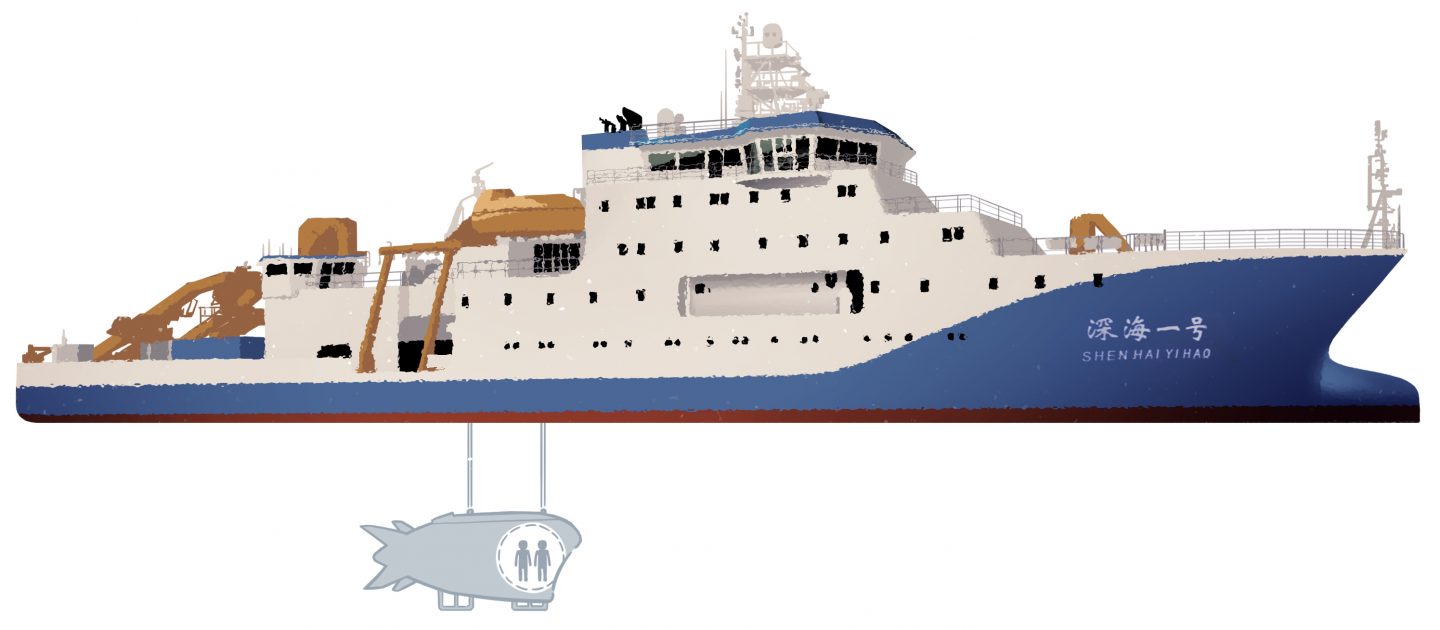
The Shen Hai Yi Hao has been designed to carry the Jiaolong, China’s biggest manned deep-sea submersible. It is the first such vessel to be designed in China and will replace the ageing Xiang Yang Hong 09 as the Jiaolong’s mothership.
On the Xiang Yang Hong 09, the Jiaolong had to be stored on deck, exposed to the elements. The Shen Hai Yi Hao features a dedicated space where the underwater vessel can be stored, resupplied and maintained, allowing for more frequent dives and easier recovery. The Shen Hai Yi Hao can also carry two remote-controlled submersibles, and all three of the submersibles can operate simultaneously.
Once complete, a year-long trip around the world is planned for the Shen Hai Yi Hao and the Jiaolong, with stops at key “marine Silk Road” nations. The ship’s main tasks will include prospecting for deep-sea minerals, studying the deep-sea environment, high seas conservation and international cooperation on cutting-edge deep-sea science.
Vessels illustrated by Li Jinghua. Additional graphics by Harry Zhang.
Freelancer Zhang Yiyi and former China Dialogue intern Tang Zheng also contributed to this article.

